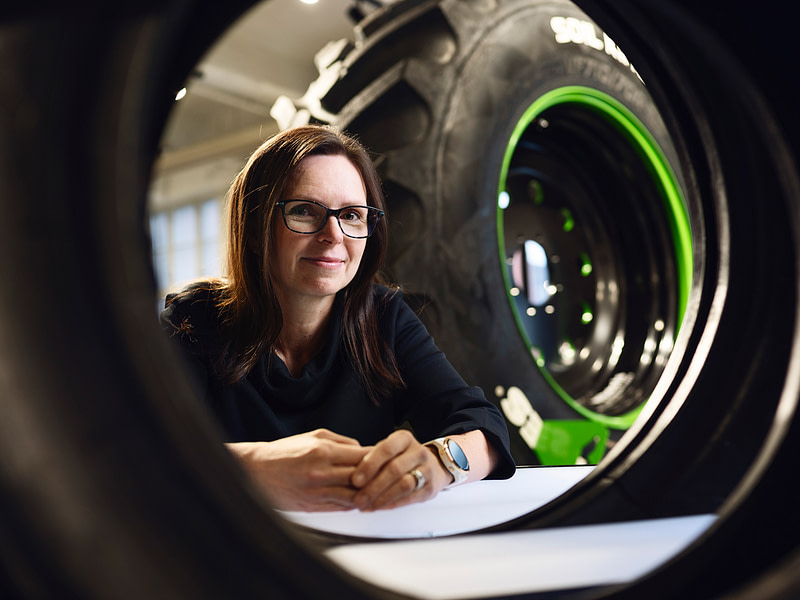Teksti Pedro H.C. Camargo, kuva Susan Heikkinen
”From Brazil to Finland, my journey has been shaped by a passion for clean energy and advanced materials to address global challenges. My research centres on advancing sunlight-driven chemical reactions and green hydrogen production.”

My fascination with the materials that shape our world began during my undergraduate studies at the Federal University of Paraná in Brazil, where I focused on metal complexes and materials chemistry. This early exploration laid the foundation for my lifelong commitment to using chemistry to solve global challenges.
After completing my PhD focused on inorganic nanomaterials at the Washington University in St. Louis, USA, under Prof. Younan Xia, I returned to Brazil to continue advancing my research.
In 2019, I found a new home at the University of Helsinki, where I now lead a vibrant research team focused on using nanomaterials to drive more sustainable reactions.
Our focus? Pioneering approaches that harness the power of light to drive and control molecular transformations—an exciting avenue with the potential to transform industries.
Having worked in Brazil, the USA, and now Finland, I have been fortunate to engage with diverse scientific communities, which has broadened my approach to solving global sustainability challenges.
Redefining Green Hydrogen Production
At the heart of our work is a mission to make green hydrogen production more efficient, scalable, and affordable.
Hydrogen is vital to global decarbonization efforts, but current technologies often rely on scarce and expensive materials like iridium, hindering large-scale deployment.
Overcoming challenges in infrastructure, such as the availability of hydrogen distribution networks, and supportive policies will also be critical to realizing green hydrogen’s full potential – areas where scalable, affordable solutions can make a major impact.
Our 12-member team is addressing this challenge by developing innovative catalysts for proton exchange membrane (PEM) and alkaline electrolyzers, significantly reducing the use of precious metals. Our next-generation catalysts promise to lower costs and boost efficiency, accelerating the adoption of green hydrogen on a global scale.
”With prototypes under development, we aim to see early-stage applications of these catalysts within the next few years.”
By accelerating green hydrogen production, we can revolutionize industries such as transportation and heavy industry, reducing their carbon footprints and paving the way for a decarbonized future.
One groundbreaking advancement is the development of plasmonic catalysts, which can harness visible light or sunlight to enhance hydrogen production. This approach has the potential to reduce the reliance on electricity, enabling hydrogen production off the grid using only sunlight.
This leap could transform green hydrogen into a decentralized energy solution—moving us closer to a future where clean energy is more accessible and independent of traditional power infrastructures.
Harnessing the Power of Sunlight for Chemical Reactions
Beyond hydrogen, we are exploring using sunlight as the driving force behind chemical transformations. Our plasmonic nanomaterials absorb visible light and convert it into energy, allowing us to power chemical reactions that would otherwise require high temperatures and fossil fuel-based energy.
From sustainable fuel production to creating essential chemicals like ammonia and methanol, these light-driven reactions can dramatically reduce the carbon intensity of chemical manufacturing. These products are critical for sectors like agriculture, transportation, and energy storage, making sustainable production methods a key component of a broader decarbonization strategy.
Through advanced synthesis, catalytic testing, and state-of-the-art modelling, our research is unlocking new possibilities in renewable energy and sustainable manufacturing.
Bridging Academia and Industry for Real-World Impact
While much of our research is rooted in fundamental science, we are also committed to translating these innovations into practical applications.
We are leading a commercialization project, funded by Business Finland, to spin out a catalyst company.
This venture focuses on developing cost-effective catalysts for green hydrogen production, particularly through reducing iridium use and leveraging the unique properties of plasmonic systems.
With prototypes under development, we aim to see early-stage applications of these catalysts within the next few years. This project represents our broader commitment to driving real-world change.
By making green hydrogen more accessible and efficient, we aim to contribute to a global transition away from fossil fuels, helping industries and societies shift towards sustainable energy sources.
Shaping the Future of Solar-Driven Chemistry
Looking to the future, our team is eager to explore the full potential of solar-driven chemical processes. One key area of research involves photoelectrochemical cells (PECs), which use sunlight to generate hydrogen directly from water.
By incorporating our innovative catalysts into these systems, we aim to create entirely sunlight-powered solutions for green hydrogen production, removing the need for electricity altogether.
Beyond hydrogen, our plasmonic catalysts are being developed to create fuels and value-added molecules from carbon dioxide (CO₂) and other waste materials such as plastics and industrial side streams.
Through light-driven catalytic processes, we can transform waste into valuable resources, supporting circular economy models and reducing greenhouse gas emissions. Moreover, our ability to precisely control reaction selectivity enables us to efficiently produce high-demand products from these waste streams.
We are also advancing catalysts made entirely from earth-abundant materials, moving towards sustainable alternatives for hydrogen production and other chemical transformations.
By focusing on widely available elements, we can scale these technologies, making renewable energy solutions more cost-effective and accelerating the green transition of our society.
Our work supports Finland’s and the EU’s ambitious goals for carbon neutrality by 2035, contributing to a greener European energy landscape.
A Vision for a Sustainable Future
Our team is driven by the potential of these innovations to reshape industries, close resource loops, and contribute to a more sustainable planet.
By pioneering catalysts and methods to harness sunlight for chemical transformations, we are committed to driving breakthroughs that reshape how we interact with our environment, creating lasting positive change for generations to come.
Our research is driving global efforts in fighting climate change, contributing to a greener European energy landscape and a more sustainable future worldwide.
Author Bio
Pedro H. C. Camargo is a Professor of Inorganic Materials Chemistry at the University of Helsinki, where he leads a research group focused on sustainable nanomaterials and plasmonic catalysis.
His work is at the intersection of chemistry and sustainability, pioneering innovations in green hydrogen production and light-driven chemical transformations.
With a PhD from Washington University in St. Louis and an international career across Brazil, the USA, and Finland, Prof. Camargo is committed to developing science and technologies that address the world’s most urgent environmental challenges.
Through his pioneering research, Prof. Camargo is helping drive the global shift towards a more sustainable future, where chemistry plays a pivotal role in safeguarding the well-being of our planet and future generations



